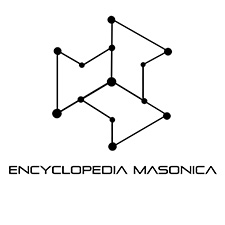
ORPHANS
Encyclopedia Masonica
A brief paragraph in the Book of Constitutions edited by John Entick, M. A., 1756, announces January 31, 1738-9, the rejection of "a scheme for the placing out Mason's sons apprentices." This was proposed by John Boaman. His proposal is in the Rawlinson Manuscript C. 136, in the Bodleian Library at Oxford. The proposition was to raise yearly three hundred and ten pounds for the carrying on and providing for twenty children of Masons and binding four to trades every year. Brother Boaman prepared a careful statement and asserted that "security given for the performance, if the Brethren cheerfully agree to pay only one-half penny a week each." The Royal Masonic Institution for Girls was proposed in 1788 by the Chevalier Bartholomew Ruspini, initiated at Bristol, April 7, 1762, in the Bush Lodge. Formal recognition was extended to the School at the Quarterly Communication in February, 1790, by the Grand Lodge of the Moderns.
Freemasonry was introduced into Sweden from England about 1735 and seems to have taken great hold of the wealthy classes. In 1753 Swedish Lodges were anxious to commemorate the birth of a Princess of the royal house that sheltered them. They hit upon the plan of establishing an orphan asylum at Stockholm. An annual concert was organized for the benefit of this institution, and proved no less successful as a source of revenue than the great festival of the English School. In 1767 a great accession to the resources of the Swedish institution took place. In that year a wealthy merchant of Stoekholm, Johann Bohmann, a member of the Grand Lodge of Sweden, endowed it with three hundred thousand copper dollars. This sum is not quite as formidable as it seems. Thory, from whom we borrow the account, is careful to indicate that it represented only one hundred and thirty thousand francs, or about fifty-two hundred pounds sterling (over twenty-five thousand dollars). There is an odd similarity between the names of the English Brother Boaman and the Swedish Brother Bohmann or Boman. The one sounds like an attempt to reproduce the other.
In 1778 the Queen of Sweden gave the Asylum an endowment of sixty dollars a year and the Burgomaster in Stockholm a like sum. The news of this patronage incited the Brethren of Gottemburg to emulate the beneficence of their Brethren at Stockholm and they too founded in 1756 a benevolent institution for children. This institution has adopted the plan of boarding out the children in selected families under proper supervision; a plan which has many advantages and which has worked satisfactorily under their painstaking-administration. Nor did this close the tale of Swedish benevolence towards the orphans of the Craft in those early days. In 1762 the Lodge Gustaf in Karlskrona founded there an orphanage with a section for Freemasons' children. The Brethren of Stockholm have provided a magnificent home at Cnstineberg where they maintain an average of one hundred and forty orphans of the Craft.
"Sundry Brethren" in Dublin in 1792 formed themselves into a "Society for the schooling of the orphaned female children of distressed Masons." This received the recognition and the sanction of the Grand Lodge in 1795 and at the Communication of February, 1796, thanks were voted to the "worthy Brethren with whom the idea originated."
The Royal Masonic Institution for Boys was in 1798 projected by some English Brethren, members of the Grand Lodge of the Ancient who planned a scheme "for clothing and educating the sons of indigent Freemasons." The above information by Brother W. J. Chetwode Crawley is in the Christmas number of the Freemason, 1897, and is also in the Transactions, Quatuor Coronati Lodge (pages 167 to 186, volume xxviii, 1910; see also Charity and Benevolence).
